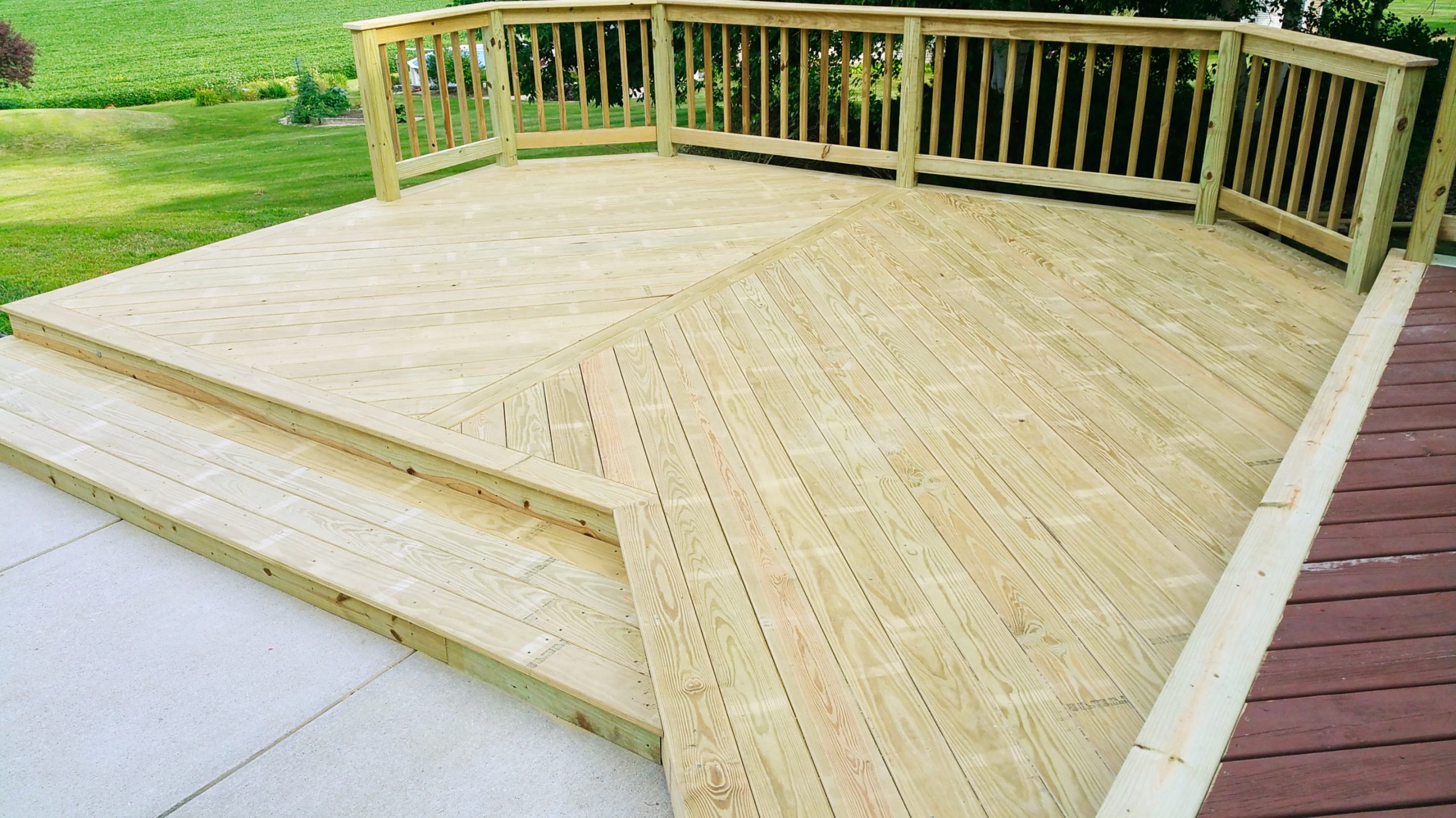
Winterizing Your Deck: Tips for Cold Weather Maintenance
As Summer comes to an end and the temperatures drop, it’s time to start thinking about how to protect your deck from Wisconsin’s brutal winter conditions. At Decksperts, we understand that a well-maintained deck not only enhances your home’s value but also ensures its longevity through harsh winters. Here’s a comprehensive guide to winterizing your deck and keeping it in top shape.
1. Clean Your Deck Thoroughly
Before the first snowfall, make sure your deck is clean and free of debris. Leaves, dirt, and other organic matter can trap moisture against the wood, leading to rot and damage over time. Use a broom or leaf blower to remove leaves and debris, then wash the deck with a mild detergent and a stiff-bristled brush. Allow it to dry completely before moving on to the next steps.
2. Inspect for Damage
Take this opportunity to inspect your deck for any signs of damage or wear and tear. Look for loose or damaged boards, nails, or screws. Pay special attention to areas where moisture might accumulate. Address any issues now to prevent them from worsening during the winter.
3. Apply a Protective Sealant
To protect a wood deck from moisture and freezing temperatures, apply a high-quality water-repellent sealant. This creates a barrier that helps prevent water from penetrating the wood and causing damage. Choose a sealant designed for the harsh Wisconsin climate to ensure the best protection.
4. Store or Cover Outdoor Furniture
If possible, store outdoor furniture in a shed or garage to protect it from the elements. If storage isn’t an option, use weatherproof covers to shield your furniture from snow and ice. This will not only extend the life of your furniture but also prevent it from becoming a safety hazard on your deck.
5. Keep Your Deck Free of Snow and Ice
Regularly remove snow and ice from your deck to prevent damage and maintain safety. Use a plastic shovel or a broom to avoid scratching the deck’s surface. For ice removal, avoid using salt, as it can be corrosive to your deck’s materials. Instead, use sand or a specially designed ice-melt product that’s safe for wood surfaces.
6. Check for Ice Dams and Moisture Accumulation
Ice dams can form along the edges of your deck, trapping moisture and causing damage. Keep an eye out for any signs of ice damming and address them promptly. Ensure proper drainage and address any issues with your home’s gutters or downspouts that might contribute to moisture accumulation on your deck.
7. Plan for Spring Maintenance
While you’re winterizing, it’s also a good time to plan for spring maintenance. Create a checklist for inspecting and repairing any issues that arise once the weather warms up. This proactive approach will help you tackle any problems early and get your deck ready for the warmer months.
Winterizing your deck is a crucial step in protecting your investment and ensuring it remains a beautiful and functional part of your home for years to come. At Decksperts, we’re here to help with all your deck maintenance needs and to answer any questions you may have about preparing your deck for winter. Stay warm, stay safe, and enjoy your winter!